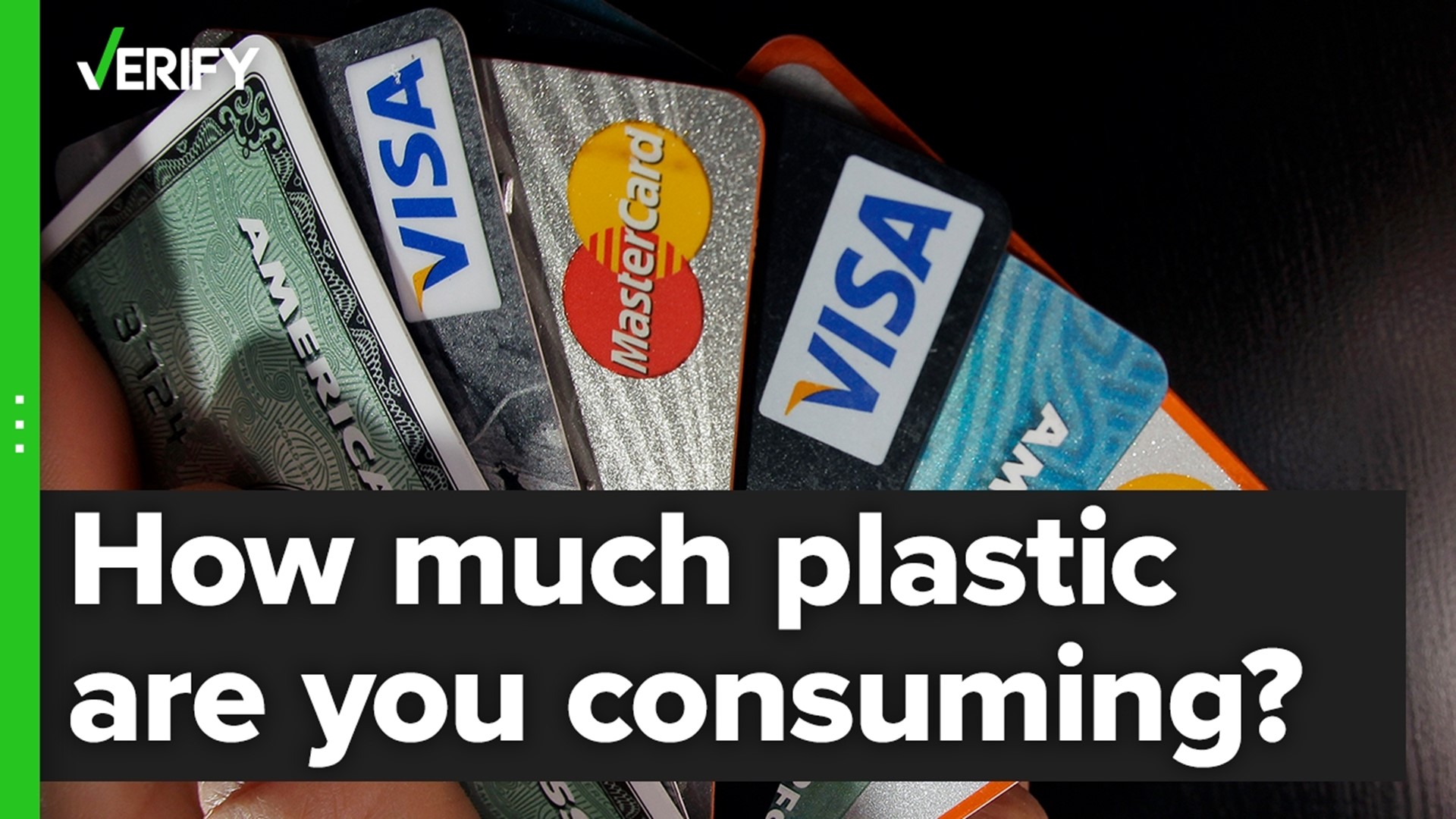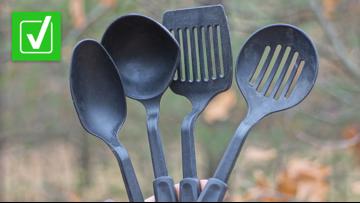A New York Post article went viral in late March, with the staggering headline “You’re eating a credit card’s worth of plastic a week — and it’s killing your gut.”
The article is about microplastics, pieces of plastic less than 5 millimeters in size, which are increasingly being found in water, air, and food.
Research on microplastics is a burgeoning field, and the article references a 2021 study as its source for the claim that “humans consume about five grams of small plastic particles every week, which is about the weight of your credit card.”
THE QUESTION
Does research show you eat a credit card’s worth of plastic every week?
THE SOURCES
Study in Journal of Hazardous Materials
THE ANSWER
Not exactly; the headline omits important context. Researchers calculated a wide range for how much microplastic people consume. 5 grams, or “a credit card’s worth,” is on the highest end of that range, which could also be as low as 0.1 grams.
WHAT WE FOUND
Relatively little is currently known about microplastics. Scientists are working on finding answers to basic questions, including how much microplastic is in our environment and what effects it can have on human health.
The authors of the Hazardous Materials study set out to help answer one of those basic questions: How much microplastic are humans consuming?
To do this, they compiled data from previous studies that measured microplastics in specific things we eat, drink, or breathe. This means this was not a laboratory experiment with newly collected data where levels of plastic were measured in human beings. These sorts of studies are common, especially in younger fields of research like microplastics.
“These are the sorts of things that are needed when you have lots of literature and it's all over the world… you need a paper like this, to try and pull that together,” said Fay Couceiro, a microplastics researcher at the University of Portsmouth, who was not involved in the study. “This is quite common in the scientific world.”
One of the difficulties with such studies is that previous scientists didn’t use the same methods, or even units of measurement. So the authors have to find a way to standardize all the data so they can add it up.
“The data was synthesized from a range of non-standard methods, and presented in non-standard units,” said Kala Senathirajah, a co-author of the study, in an email to VERIFY.
They took existing information about how many microplastics are in, for example, shellfish, and made estimates regarding how much those microplastics weigh and how much shellfish a typical person consumes.
Because those calculations require assumptions that could vary widely from individual realities, the scientists had to calculate a range rather than one definitive number. Their analysis determined humans likely consume between 0.1 to 5 grams of plastic per week.
Five grams is the typical weight of a credit card. So if you were to fall on the high end of the spectrum, the New York Post headline is plausible. But the article omits the rest of the range.
“It is not entirely inaccurate, as it is possible that there are people in the world consuming up to a credit card’s worth of plastic per week (or more),” said Senathirajah. “But it is also important to bear in mind that the findings did not suggest that every individual in the world is consuming a credit card's worth of plastic each week.”
Senathirajah emphasized, however, that research conducted since their 2021 study indicates the number of particles people consume could be even higher. That’s in part because at the time of their analysis, there simply was not information on how much microplastic could be found in many types of things people consume; for instance, packaged food.
“Additional studies that have detected microplastics in additional food and beverage groups, which changes the dataset and thus potentially change the estimated global average rate of microplastics ingested,” she said. “The findings could be a gross underestimation of the amount of microplastics ingested for some people.”
Couceiro agreed.
“I would say that is an extremely low estimate, because they really were only looking at a few things that we eat and drink.” she said. “There's a lot more information about what's in the water, in the sediments, in the marine environment, [and] in fish. But actually how much we're eating is relatively unknown. And it's an area that there is more work going on in at the moment.”
But she also points out that there’s a big difference between the number of particles consumed and the weight or mass of those particles. And that’s important, because the “credit card” claim is based on the 5 gram mass estimate.
“Weight versus number is a big contention in the scientific world at the moment,” Coucerio said. “You could have one piece of plastic that weighs quite a lot. And really, it wouldn't do much damage; it would go straight through you, and it would come out the other end. If you had a million smaller plastics, now, that's a completely different thing, in terms of toxicity and the problems it might cause getting into the bloodstream, getting into your tissues.”
So even though the number of particles consumed is likely an underestimate, the 5 gram figure highlighted by the Post, according to Coucerio, is probably still an overestimate.
“Myself, I would estimate something towards the lower end, because the smallest particles really don't weigh very much,” she said. “They actually did a calculation in the paper, which was 0.7 grams per week. And I think that's probably about right for the numbers they were looking at.”
More from VERIFY: No, you can’t see the Great Pacific Garbage Patch from space












